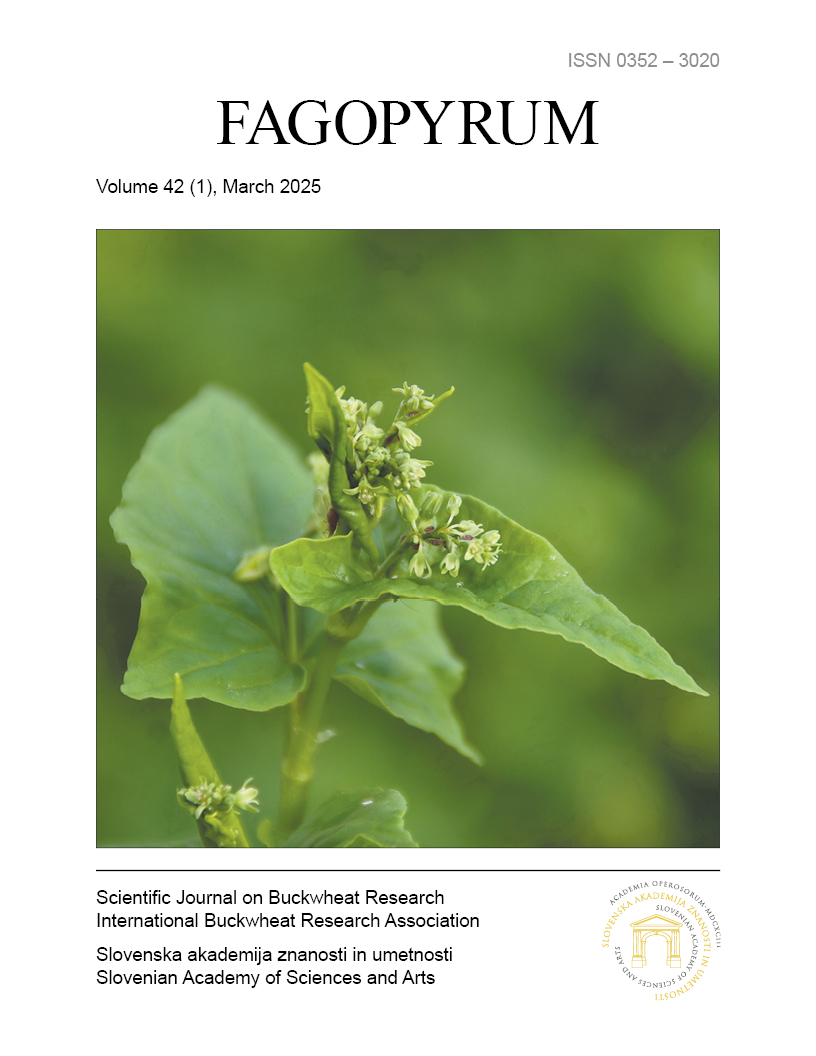The potential of Si and Se as biostimulants to enhance resistance to climatic conditions and improve yields in common and Tartary buckwheat
DOI:
https://doi.org/10.3986/fag0045Keywords:
common buckwheat, Tartary buckwheat, elements, UV radiations, droughtAbstract
Common buckwheat and Tartary buckwheat are pseudocereals and grow worldwide. Due to the high concentration of flavonoids, buckwheats are potential sources of smart food. Tartary and common buckwheat are traditionally grown in mountain regions of China, Korea, the northern parts of India, Bhutan, and Nepal. Plants that grow in high elevations are exposed to intense UV radiation, which can harm susceptible sites in the plants. Plants defend themselves against intense radiation by synthesising UV-absorbing compounds. Drought will probably become more frequent and intense due to climate change. UV radiation and drought are environmental parameters that present stress to the plants. These impacts can be synergistic or antagonistic. Selenium (Se) and silicon (Si) can protect plants exposed to UV radiation or drought since Se acts as an antioxidant. Silicon is an abundant element in Earth’s crust. It is present as a liquid or an amorphous or crystalline solid phase in the soil. Selenium and silicon are not essential elements for vascular plants, but they may positively affect plants. Thus, they can be added to the growth media to improve crop yield and quality, enhance resistance to biotic and biotic stress and improve plant growth.

